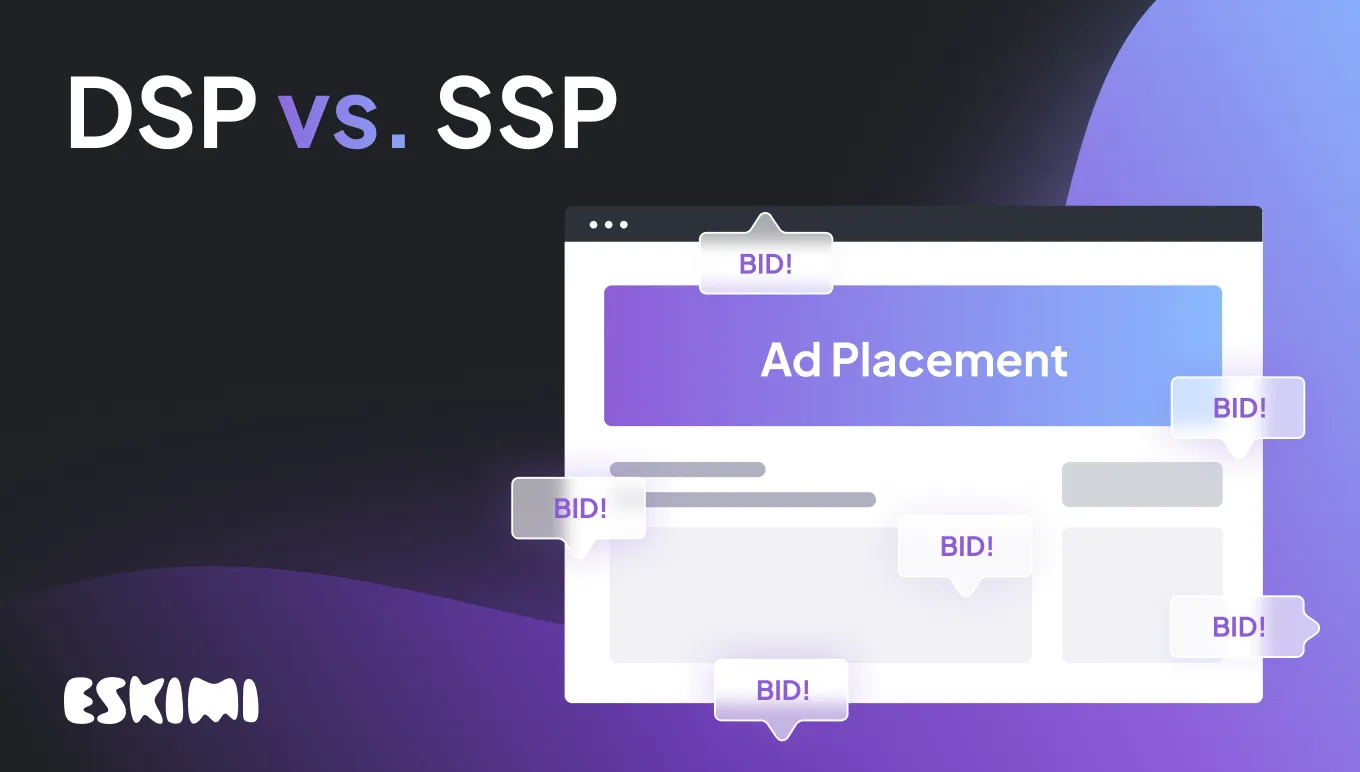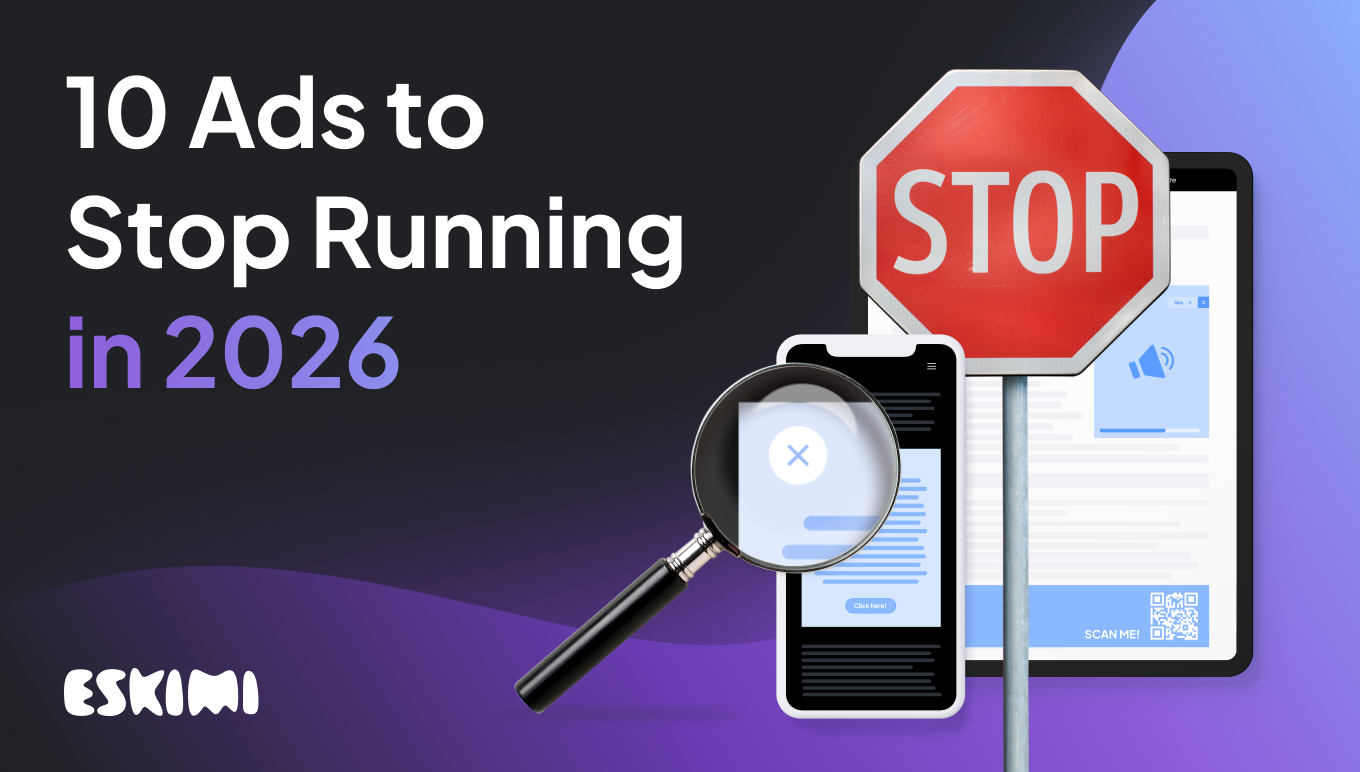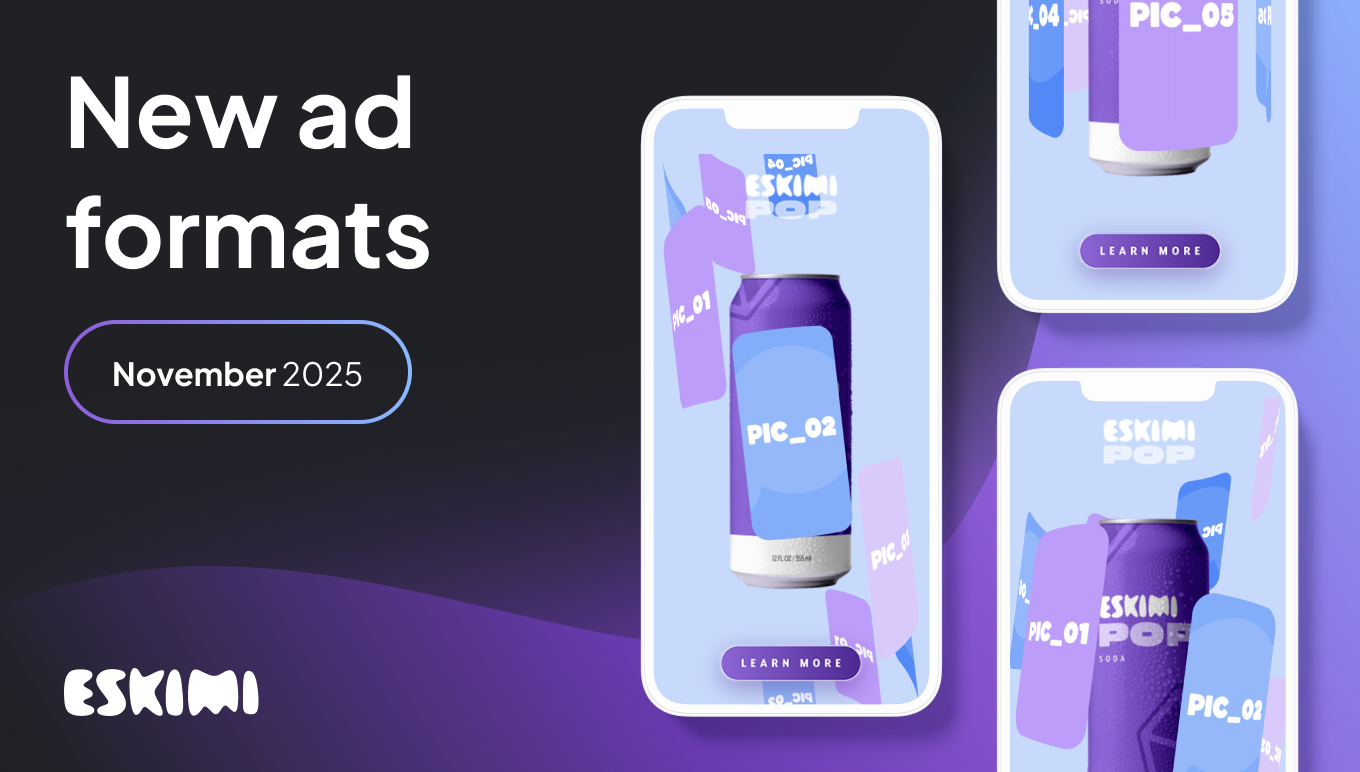DSP Vs. SSP: Understanding Key Differences

Taking the first steps in the programmatic world can feel overwhelming – different types of deals, ad formats, tons of new opportunities to try, and even more new abbreviations to decode and learn.
DSPs and SSPs are crucial technologies for increasing the efficiency of your advertising efforts. They are also something you just can’t avoid once you enter this automated market.
In this post, you’ll learn:
- What are DSP and SSP
- Benefits of each
- How they work
- Differences between the two
Let’s get started.
Automation in the advertising industry
Various automated solutions are a great way to increase the efficiency of processes, regardless of the industry you’re in. Thus, digital advertising is no exception.
As the possibilities and advertising space continue to grow, so does the competition. As a result, not only effectiveness but also efficiency becomes crucial for successful overall campaign execution.
One of the automation use cases in advertising is to serve ads to the right people at the right time. This is where the term “programmatic” takes the stage – the use of data and automated workflows to optimize ad placement buying.
Global programmatic advertising spending is expected to reach $557.56B by the end of 2023, increasing by more than 11% compared to 2022. In the following four years, it is predicted to grow to $724.84B.

DSP and SSP, therefore, are two essential elements that can help you get the best out of programmatic advertising. These tools allow advertisers and publishers to manage automated media buying and selling more easily and reach the highest advertising efficiency.
What is a DSP?
DSP, or demand-side platform, is programmatic software advertisers use for automated, centralized media buying from multiple sources.
In programmatic terms, advertisers seek ad inventory (available advertisement placements) to reach their target audiences based on a predefined budget and various targeting criteria.
Using a DSP, advertisers can automate the process of buying different types of ads, such as display, video, native, in-game, etc., via ad exchanges, and deliver their messages through high-quality sources.
How DSP works
As the name implies, the demand-side platform is driven by the demand side, meaning that it’s used by advertisers. The end goal of DSPs is to deliver the campaign at the best possible cost and maximize the result at the same time.
How does this happen?

Put simply, the process of buying ad placements via DSP consists of five steps:
- User visits a website.
- Information about this specific user is then added to a DMP (Data Management Platform that collects and stores user information). DSP, which is connected to DMP, sends it to the ad exchange.
- SSP receives available ad placements from publishers and sends them to the ad exchange or DSPs directly.
- DSP bids on the ad request in real time based on pre-set criteria.
- The highest bid wins the ad placement, and the ad is displayed.
As complicated as it may sound, this process lasts for a fraction of a second – or is completed in a blink of an eye.
DSP examples
Some of the best DSP examples in AdTech are Eskimi, Xandr, StackAdapt, SmartyAds, Epom, and The Trade Desk.
These platforms provide a variety of targeting options and ad formats, some of them offer self-service, others – fast and reliable support and guidance, and many other functionalities that can help advertisers and agencies reach their audiences more efficiently.

DSP benefits
Opportunities to lower ad costs
Buying ad placements through demand-side platforms relies on auctions. Therefore, the cost is determined based on basic supply and demand economics.
Improved work efficiency
The “negotiation process” between advertisers and publishers is automated, and it takes milliseconds to buy ad inventory, which significantly reduces the time and human resources needed to complete the deal.
Broad inventory selection
DSPs are connected to a wide range of publishers globally. For advertisers, this eliminates the need to communicate with publishers directly and allows them to explore a wider range of possibilities while working with a single provider.
Precise user targeting options
When bidding on the ad impression, DSP considers many factors, including the cost aspect and the audience that the advertiser wants to reach.
The whole point of collecting information about user behavior and storing it in a DMP is focused on improving the targeting. Therefore, advertisers can choose from different targeting solutions, like daypart targeting, location-based ads, contextual targeting, and more that DSPs allow.
In-depth campaign reporting and analytics
Using DSPs to run their campaigns, advertisers and agencies can see their ad performance in one centralized place.
Information about reached user demographics, top devices, sites, and more can help to optimize ongoing campaigns as well as help improve future results.
What is an SSP?
SSP, or supply-side platform, is programmatic software publishers use to offer their available ad slots to advertisers to maximize revenue. Publishers include apps, individual websites, groups of sites, etc.
Put simply, publishers have ad placements that they want to fill with ads from brands. With the help of SSP, they can connect to multiple DSPs at the same time and offer available placements for bidding.
How SSP works
As opposed to the DSP, SSP is used by the supply (publisher) side. It helps publishers to optimize ad placement selling, reducing the chances of empty (wasted) space, thus maximizing placement revenue.
So what happens when a website or an app has inventory available?

- A publisher has ad space available.
- The website communicates with an SSP to list the available ad space on an ad exchange or sends information directly to DSPs.
- DSP bids on a listed ad space for advertisers in real time.
- The highest bid wins and the ad placement is sold to the advertiser.
SSP example
As for the top supply-side platforms, a few of the most popular are PubMatic, OpenX, AdSuite, AdStir, Sharethrough, and 33Across. Used in conjunction with publisher ad servers, SSPs enable easier ad inventory management and offers and ensure publishers sell their inventory for the best price.
SSP benefits
Automated ad selling
Automated ad selling is one of the key benefits of supply-side platforms. It looks at available bids in real time and can select the best-fitting buyer, removing manual work and increasing efficiency.
Connection to multiple networks
Supply-side platforms are usually connected to different ad networks, exchanges, and DSPs, enabling more buyers to participate in bidding. Therefore, it increases the chances for publishers to fill more ad slots (=earn more).
Effective inventory management
Using SSP, publishers can manage their ad placements effectively, blacklisting and whitelisting advertisers, setting specific channels or buyers, blocking some ad types, etc.
Put simply, they can prevent any content that they don’t want to show on their sites.
Manageable price floor
Enabling publishers to set the minimum amount advertisers have to pay for particular ad placement lets publishers optimize their revenue.
Frequency capping
SSPs can limit how often a specific or similar ad can be shown to the same viewer, thus reducing the chances of annoying users with the same ads or more intrusive ad formats (e.g., screen takeover).
Differences between DSP and SSP
In general, DSPs and SSPs are a part of the same ad selling/buying ecosystem, their users have the same goal of increased efficiency of this process, and they’re both powered by similar technologies, e.g., deep learning.
However, the key difference between DSP and SSP is the user each of them serves:
- DSPs are used by the demand side – advertisers and agencies.
- SSPs are used by the supply side, or publishers.

How DSP and SSP work together
Together, DSP and SSP form a programmatic ecosystem that connects advertisers who want to buy ad space to publishers who have it for sale.
The technology lets advertisers automatically buy listed ad placements via auctions for the best possible price, while publishers can sell available ad space to the highest relevant bidder.
Why do SSPs connect to multiple DSPs?
Most SSPs connect to multiple DSPs for a couple of reasons:
- Price. Websites get all sorts of visits from people from different locations, specific behavior online, etc. Connection to several DSPs allows publishers to get more traffic that buys their placements, enabling them to get the maximum price.
- Advertising restrictions. Many publishers have restrictions on ad content that can appear on their sites. For example, no one would want to fill their ad placements with ads containing violence, weapons, forbidden substances, or similar. Thus, connection to multiple DSPs ensures a higher number of possible buyers and increases the chances of selling an ad space despite existing limitations.
Wrap up
In advertising, automation is essential for running ad campaigns efficiently, and here’s where DSPs and SSPs come in handy.
These two platforms allow smooth cooperation between advertisers and publishers, eliminating the need for manual negotiation. Based on the information provided, they complete deals in real time, positively impacting revenue for publishers and optimizing costs for advertisers.
Interested in launching your campaign via DSP? Book a demo with Eskimi or contact our team for more information.
Level Up Your Advertising with Eskimi
- Reach 96% of Open Web
- 2,500+ Targeting Options
- 100% Managed or Self-Service
- In-House Creative Studio Team
- Display, Video, In-Game & CTV
- #1 Rated DSP on G2




.png)